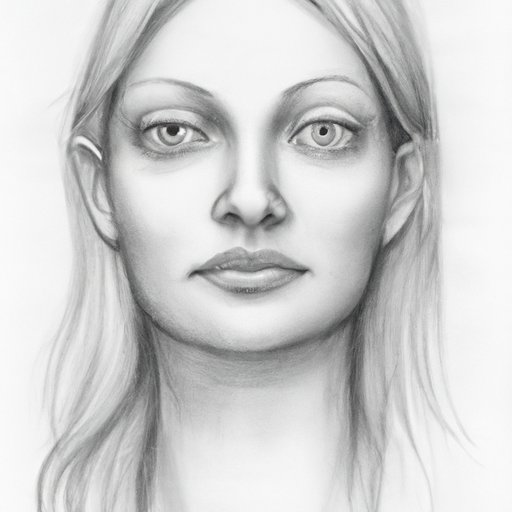
Introduction
Drawing realistic faces can be a challenging task, but it is also an incredibly rewarding and fulfilling experience. Whether you’re a professional artist or just starting out, this guide will provide you with the fundamental skills, techniques, and insights needed to draw a realistic face. In this article, we will cover a step-by-step guide to drawing realistic faces, provide a comparative analysis of various approaches and tools, offer practice exercises to improve your skills, and incorporate art theory to understand the foundational concepts behind creating realistic faces.
Step-by-Step Guide: How to Draw a Realistic Face
The first step to drawing a realistic face is to break down its individual elements such as eyes, nose, mouth, and ears. Start with drawing the general shape of the face, then add in each feature one by one. Pay attention to proportions and symmetry.
To draw the eyes, start with the basic shape and then add in the iris, pupil, and eyelashes as needed. Keep in mind that the eyes are one of the most expressive parts of the face, so it’s essential to get them right.
The nose can be tricky to draw, but start by drawing its general shape first, then adding in details such as nostrils and shading.
The mouth is another crucial part of the face, and it is essential to get the expression right. Start by drawing the general shape of the lips, then add in details such as shading, highlighting, and contours.
Comparative Analysis: Approaches, Techniques, and Tools for Drawing Realistic Faces
Different artists approach drawing realistic faces in different ways, using various tools and techniques. Pencils, charcoal, and digital software are some of the most popular drawing tools used to draw realistic faces.
Pencils are often used to create a sketch of the face, and they come in different grades, from hard to soft. Charcoal is another popular tool that is ideal for creating soft tones and shading.
Digital software, such as Photoshop or Procreate, has revolutionized the way artists approach drawing. They provide a range of advanced features and tools, making it easier for beginners to learn the art of drawing.
Practice Exercises: Improve Your Skills in Drawing Realistic Faces
The best way to improve your skills in drawing realistic faces is through practice. Start with simple shapes, then gradually advance to more complex features. Use reference materials such as photographs or models to help you get a better understanding of facial structures and proportions.
Another helpful tip is to practice drawing different expressions, which will help you add emotion and character to your drawings.
Incorporate Art Theory: Understanding the Theory Behind Drawing Realistic Faces
Art theory provides a foundation for artists to create their works. Understanding lighting, shading, and anatomy can help create more realistic and detailed drawings.
Shading is essential in creating depth and dimension in your portraits. It’s important to understand the different types of shading, such as cross-hatching and stippling, to create realistic textures.
Anatomy is another crucial element when drawing realistic faces. Understanding facial muscles and bones can help create more accurate and realistic portrayals.
Conclusion
Drawing a realistic face can be challenging, but with practice, anyone can improve their skills. Understanding the foundational concepts of art and utilizing the right techniques and tools can help create more lifelike and detailed drawings. Remember to keep practicing and never stop exploring your creative potential.




